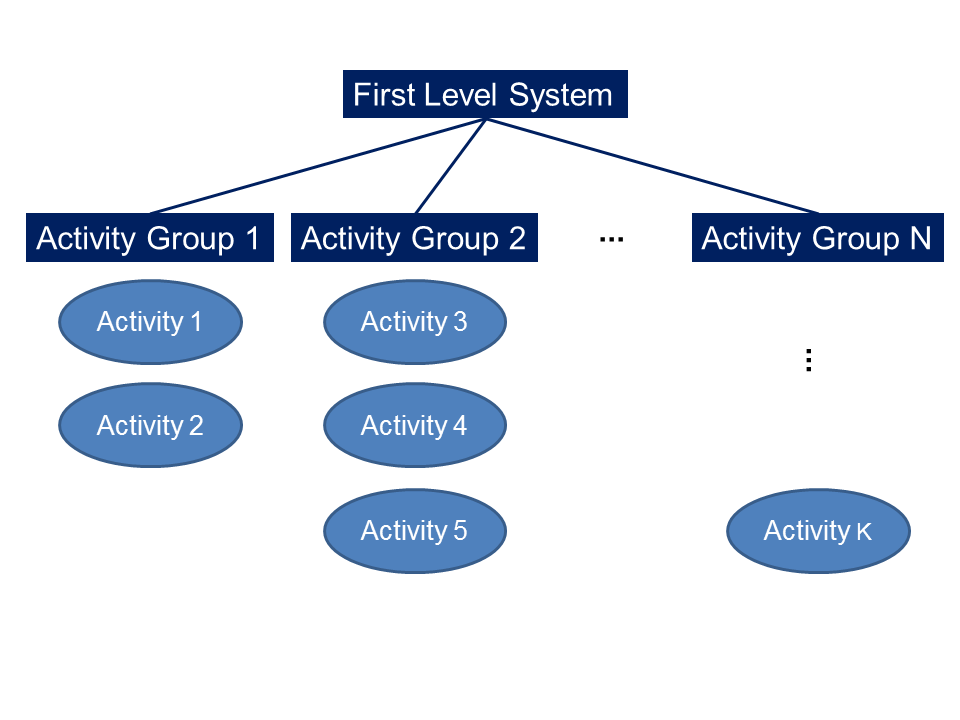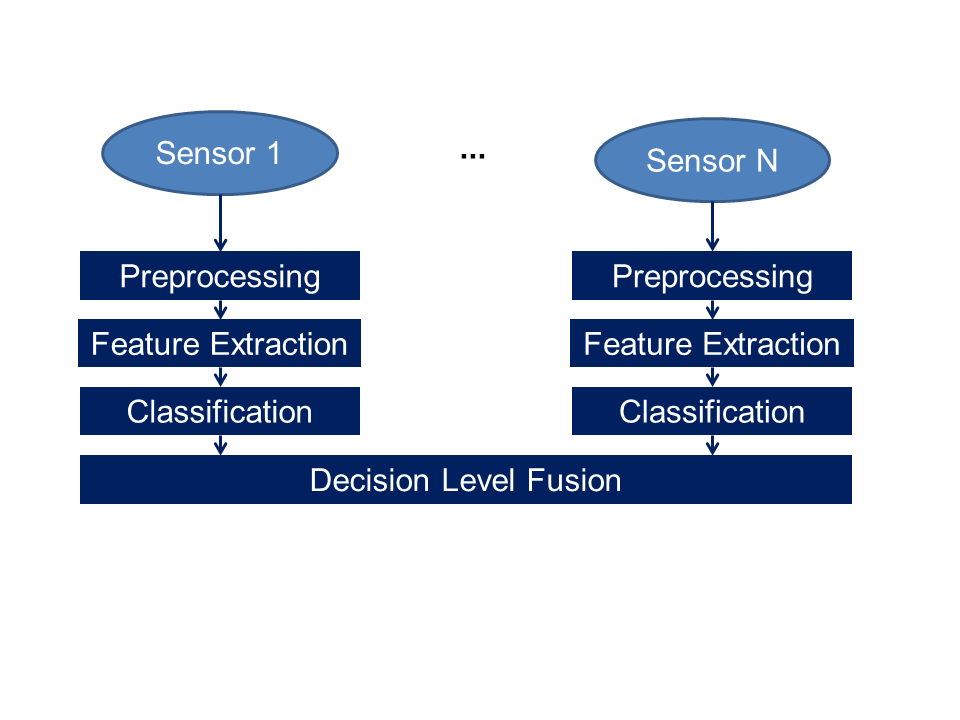-
Hierarchical, Multi-Sensor Based Classification of Daily Life Activities: Comparison with State-of-the-Art Algorithms Using a Benchmark DatasetInsufficient physical activity is the 4th leading risk factor for mortality. Methods for assessing the individual daily life activity (DLA) are of major interest in order to monitor the health status and to provide mandatory feedback about the individual quality of life. The assessment of DLAs with self-reports induces problems like reliability, validity, and sensitivity. In recent years, small and light-weight inertial sensors were used to provide objective measurements of physical activity. One major research field is the classification of DLAs, e.g. walking, washing dishes or climbing stairs.
We propose a hierarchical classifier structure that is flexible in the integration of new activities. Furthermore, the sensor fusion of accelerometer and gyroscope improves the distinction of activities like ascending/descending stairs.
Since it is difficult to compare newly proposed methods to existing approaches, we provide an publicly available dataset (
 www.activitynet.org). The hierarchical, multi-sensor based classification system was compared to state-of-the-art algorithms using a benchmark dataset.
www.activitynet.org). The hierarchical, multi-sensor based classification system was compared to state-of-the-art algorithms using a benchmark dataset.
Classification of Daily Life Activities by Decision Level Fusion of Inertial Sensor DataSince new and better sensors are frequently available on the market, an optimal activity recognition system should integrate such devices without much effort. We propose a decision level fusion technique, in which each sensor node independently classifies the performed activity. The decision of the sensors are fused and combined for a final decision.

Towards Big Data for Activity Recognition: A Novel Database Fusion Strategy
Usually, activity recognition algorithms are evaluated on one specific database which is limited in the number of subjects, sensors, and type of activities. A novel database fusion strategy is proposed which fuses different available databases to one large database. This fusion of databases addresses the two attributes high volume and high variety of the term "big data".
Data AcquisitionArticles in Conference Proceedings9th International Conference on Body Area Networks (BODYNETS 2014), London, Great Britain, 29.09.2014-01.10.2014, pp. 97-103, 2014 (BiBTeX, Who cited this?)Journal ArticlesHierarchical, Multi-Sensor Based Classification of Daily Life Activities: Comparison with State-of-the-Art Algorithms Using a Benchmark DatasetPLos ONE, vol. 8, no. 10, pp. e75196, 2013 (BiBTeX, Who cited this?)Articles in Conference Proceedings8th International Conference on Body Area Networks (8th International Conference on Body Area Networks (BODYNETS 2013)), Boston, USA, 30.9.2013-2.10.2013, pp. 77-82, 2013 (BiBTeX, Who cited this?)

